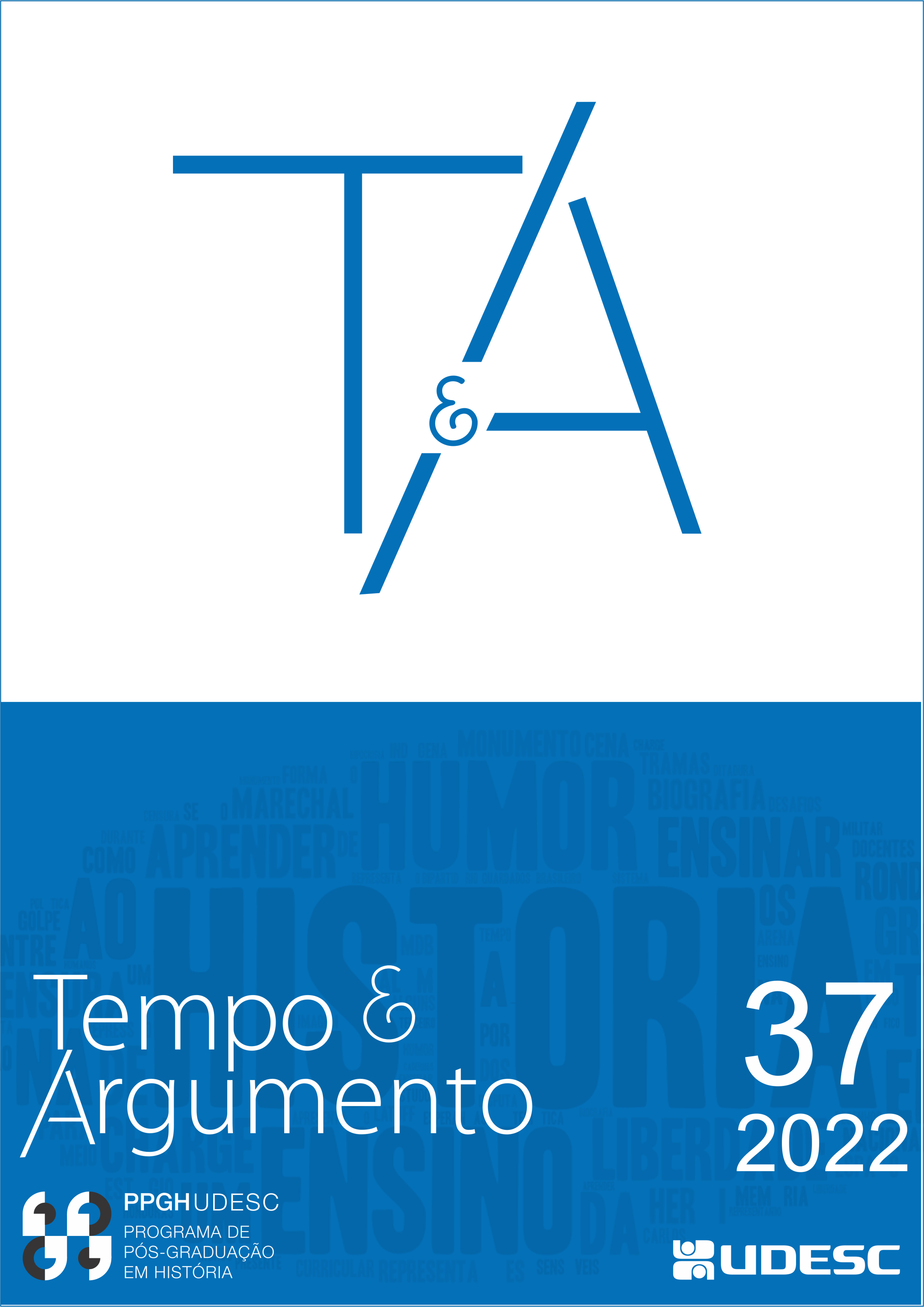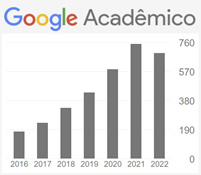De tônico para idosos a melhorador de desempenho em crianças: os usos da Ritalina e as explicações cerebrais para transtornos mentais
DOI:
https://doi.org/10.5965/2175180314372022e0305Palavras-chave:
Ritalina, metilfenidato, TDAH, smart drugs, medicalização, farmaceuticalizaçãoResumo
O objetivo deste artigo é analisar em perspectiva histórica os diferentes usos atribuídos à Ritalina (metilfenidato), desde a sua descoberta, na década de 1950, até hoje. Analisamos também como as explicações sobre supostos substratos neurais para os transtornos mentais possibilitou e legitimou o atual uso da droga para “tratar” problemas de comportamento e para melhorar o desempenho acadêmico. São abordados o diagnóstico do Transtorno de Déficit de Atenção com Hiperatividade (TDAH), que permitiu o uso de metilfenidato e de outros estimulantes em crianças; como esse medicamento foi usado ao longo do tempo, desde sua entrada no mercado na década de 1950; o papel das explicações biológicas cerebrais na consolidação do TDAH como diagnóstico psiquiátrico tratável com medicamentos; e como tudo isso resulta no metilfenidato como um medicamento prescrito e utilizado para melhorar o desempenho cognitivo. Argumentamos, ao final, que a crença nos substratos neurais de transtornos mentais pode gerar consequências sociais relevantes: a relativização da influência de questões sociais nos sofrimentos; a tentativa de prevenção de “perigos” por meio do tratamento e estigmatização de indivíduos considerados em risco; danos físicos e neurais decorrentes do uso exagerado e/ou a longo prazo de medicamentos psicotrópicos, dentre outras.
Downloads
Referências
APA. American Psychological Association. DSM-5: manual diagnóstico e estatístico de transtornos mentais. Porto Alegre: Artmed, 2014.
APA. American Psychological Association. DSM-III: diagnostic and statistical manual of mental disorders. 3. ed. Washington, DC: APA, 1980.
ARNOLD, Eugene; KIRILCUK, Vladimir; CORSON, Samuel; CORSON, Elizabeth. Levoamphetamine and dextroamphetamine: differential effect on aggression and hyperkinesis in children and dogs. The American Journal of Psychiatry, [s.l.], v. 130, n. 2, p. 165-170, 1973.
AYD, Frank. Protracted administration of methylphenidate (ritalin): clinical and laboratory survey of fifty patients. Psychosomatics, [s.l.], v. 5, n. 3, p. 180-187, 1964.
BARE, Wesley. A stimulant for the aged: observations on a combination (ritonic) methylphenidate-vitamin-hormone. Journal of the American Geriatrics Society, New York, v. 8, p. 292-297, 1960.
BENSON, Kari; FLORY, Kate; HUMPHREYS, Kathryn; LEE, Steve. Misuse of stimulant medication among college students: a comprehensive review and meta-analysis. Clinical Child and Family Psychology Review, [s.l.], v. 18, p. 50-76, 2015.
BORTOLUZZI, E.; ROELLA, C.; LONGONI BORTOLUZZI, S.; MONTOLI, E. Methylphenidate in the treatment of shivering. Anesthesia & Analgesia, [s.l.], v. 42, n. 3, p. 325-331, 1963.
BRACHFELD, Jonas; MYERSON, Ralph. Treatment of cardiogenic shock and vasopressor dependency with intravenous methylphenidate (ritalin). The American Journal of Cardiology, [s.l.], v. 15, p. 665-667, 1965.
BRZOZOWSKI, Fabíola Stolf. Transtorno de Deficit de Atenção com Hiperatividade: medicalização, classificação e controle dos desvios. 2009. Mestrado Universidade Federal de Santa Catarina, Florianópolis, 2009.
BRZOZOWSKI, Fabíola Stolf; CAPONI, Sandra. Da encefalite letárgica ao Transtorno de Déficit de Atenção com Hiperatividade (TDAH): emergência e consolidação das explicações biológicas reducionistas. Gavagai, v. 2, n. 2, p. 26–39, 2014.
BRZOZOWSKI, Fabiola Stolf; CAPONI, Sandra. Medicamentos estimulantes: uso e explicações em casos de crianças desatentas e hiperativas. Cadernos Brasileiros de Saúde Mental/Brazilian Journal of Mental Health, v. 7, n. 15, p. 01–23, 2015.
BRZOZOWSKI, Fabíola Stolf; DIEHL, Eliana E. Transtorno de Déficit de Atenção/Hiperatividade: o diagnóstico pode ser terapêutico? Psicologia em Estudo, v. 18, n. 4, p. 657–65, 2013.
CAPONI, Sandra. O DSM-V como dispositivo de segurança. Physis, Rio de Janeiro, v. 24, n. 3, p. 741-763, 2014.
CAPONI, Sandra. Uma sala tranquila: neurolépticos para uma biopolítica da indiferença. São Paulo: LiberArs, 2019.
CAPUTE, Arnold; NIEDERMEYER, Ernst; RICHARDSON, Frederick. The electroencephalogram in children with minimal cerebral dysfunction. Pediatrics, [s.l.], v. 41, p. 1104-1114, 1968.
CHAN, Eugenia; FOGLER, Jason; HAMMERNESS, Paul. Treatment of attention-deficit/hyperactivity disorder in adolescents: a systematic review. JAMA - Journal of the American Medical Association, [s.l.], v. 315, n. 18, p. 1997-2008, 2016.
COLE, Sherwood. Hyperkinetic children: the use of stimulant drugs evaluated. American Journal of Orthopsychiatry, Washington DC, v. 45, n. 1, p. 28-37, 1975.
CONNERS, Keith; EISENBERG, Leon. The effects of methylphenidate on symptomatology and learning in disturbed children. The American Journal of Psychiatry, [s.l.], v. 120, p. 458-464, 1963.
DARDOT, Pierre; LAVAL, Christian. A nova razão do mundo: ensaio sobre a sociedade neoliberal. São Paulo: Boitempo, 2016.
EICHLSEDER, Walter. Ten years of experience with 1,000 hyperactive children in a private practice. Pediatrics, [s.l.], v. 76, n. 2, p. 176-184, 1985.
EISENBERG, Leon. The management of the hyperkinetic child. Developmental Medicine & Child Neurology, [s.l.], v. 8, p. 593-598, 1966.
FARAONE, Stephen; BUITELAAR, Jan. Comparing the efficacy of stimulants for ADHD in children and adolescents using meta-analysis. European Child and Adolescent Psychiatry, [s.l.], v. 19, n. 4, p. 353-364, 2010.
FERGUSON, John. Successful therapeutic regimen for the management of behavior problems in the elderly. Journal of the American Geriatrics Society, [s.l.], v. 4, n. 11, p. 1080-1084, 1956.
FINDLING, Robert. Evolution of the treatment of attention-deficit/hyperactivity disorder in children: a review. Clinical Therapeutics, [s.l.], v. 30, n. 5, p. 942-957, 2008.
FITZGERALD, Michael; BELLGROVE, Mark; GILL, Michael. Handbook of attention deficit hyperactivity disorder. West Sussex: John Wiley & Sons, Ltd, 2007.
GLORIA-GARCÉS, Carmen; VEDANA, Kelly Graziani Giacchero. Consumo de estimulantes del sistema nervioso central en estudiantes de enfermería y medicina de una universidad chilena. SMAD, Revista Eletrônica Saúde Mental Álcool e Drogas, Ribeirão Preto, v. 9, n. 2, p. 64-69, 2013.
HALL, Kristina M.; IRWIN, Melissa M.; BOWMAN, Krista A.; FRANKENBERGER, William; JEWETT, David C. Illicit use of prescribed stimulant medication among college students. Journal of American College Health, [s.l.], v. 53, n. 4, p. 167-174, 2005.
JACOBSON, Avrohm. The use of ritalin in psychotherapy of depressions of the aged. The Psychiatric quarterly, [s.l.], v. 32, n. 3, p. 474-483, 1958.
KANNER, Leo. The thirty-third Maudsley Lecture: trends in child psychiatry. The Journal of Mental Science, [s.l.], v. 105, n. 440, p. 581-593, 1959.
KORTEKAAS-RIJLAARSDAM, Anne Fleur; LUMAN, Marjolein; SONUGA-BARKE, Edmund; OOSTERLAAN, Jaap. Does methylphenidate improve academic performance? A systematic review and meta-analysis. European Child and Adolescent Psychiatry, [s.l.], v. 28, n. 2, p. 155-164, 2019.
LEAKE, Chauncey. Newer stimulant drugs. The American Journal of Nursing, [s.l.], v. 58, n. 7, p. 966-968, 1958.
MAIER, Larissa; FERRIS, Jason; WINSTOCK, Adam. Pharmacological cognitive enhancement among non-ADHD individuals: a cross-sectional study in 15 countries. International Journal of Drug Policy, [s.l.], v. 58, p. 104-112, 2018.
MARTINHAGO, Fernanda; CAPONI, Sandra. Breve história das classificações em psiquiatria. INTERthesis, Florianópolis, v. 16, n. 1, p. 74-91, 2019.
MOERMAN, Daniel. Meaning, medicine and the ‘placebo effect’. United Kingdom: Cambridge University Press, 2002.
MONCRIEFF, Joanna. Magic bullets for mental disorders: the emergence of the concept of an “antipsychotic” drug. Journal of the History of the Neurosciences, [s.l.], v. 22, p. 30-46, 2013.
MORGAN, Henri Luiz; PETRY, Arthur Franzen; AFONSO, Pedro; LICKS, Keller; BALLESTER, Artur Oliveira; TEIXEIRA, Kellwin Nery; DUMITH, Samuel. Consumo de Estimulantes Cerebrais por Estudantes de Medicina de uma Universidade do Extremo Sul do Brasil: Prevalência, Motivação e Efeitos Percebidos. Revista Brasileira de Educação Médica, [s.l.], v. 41, n. 1, p. 102-109, 2017.
MTA. The MTA Cooperative Group. A 14-month randomized clinical trial of treatment strategies for attention-deficit/hyperactivity disorder. Archives of General Psychiatry, [s.l.], v. 56, p. 1073-1086, 1999.
NATENSHON, Adolph. Ritonic: a new geriatric supplement. Journal of the American Geriatrics Society, New York, v. 6, n. 7, p. 534-538, 1958.
PASTURA, Giuseppe; MATTOS, Paulo; ARAÚJO, Alexandra Prufer de Queiroz Campos. Prevalência do Transtorno do Déficit de Atenção e Hiperatividade e suas comorbidades em uma amostra de escolares. Arquivos de Neuropsiquiatria, São Paulo, v. 65, n. 4-A, p. 1078-1083, 2007.
PIGNARRE, Philippe. Comment la dépression est devenue une épidémie. Paris: Hachette Littératures, 2001.
RAFALOVICH, Adam. The conceptual history of attention deficit hyperactivity disorder: idiocy, imbecility, encephalitis and the child deviant, 1877-1929. An Interdisciplinary Journal, Washington DC, v. 22, p. 93-115, 2001.
RAGAN, C. Ian; BARD, Imre; SINGH, Ilina. What should we do about student use of cognitive enhancers? an analysis of current evidence. Neuropharmacology, [s.l.], v. 64, p. 588-595, 2013.
ROSE, Nikolas. Our psychiatric future: the politics of mental health. Cambridge: Polity Press, 2019.
RUTTER, Michael. Syndromes attributed to “minimal brain dysfunction” in childhood. The American Journal of Psychiatry, [s.l.], v. 139, n. 1, p. 21-33, 1982.
SIGNOR, Rita Cassia Fernandes; BERBERIAN, Ana Paulo; SANTANA, Ana Paula. A medicalização da educação: implicações para a constituição do sujeito/aprendiz. Educacao e Pesquisa, São Paulo, v. 43, n. 3, p. 743-763, 2017.
SINGH, Ilina; KENDALL, Tim; TAYLOR, Clare; MEARS, Alex; HOLLIS, Chris; BATTY, Martin; KEENAN, Sinead. Young people’s experience of ADHD and stimulant medication: a qualitative study for the NICE guideline. Child and Adolescent Mental Health, [s.l.], v. 15, n. 4, p. 186-192, 2010.
STILL, George Frederic. Some abnormal psychical conditions in children: excerpts from three lectures. Journal of Attention Disorders, [s.l.], v. 10, n. 2, p. 126-136, 2006.
TETER, Christian; MCCABE, Sean Esteban; LAGRANGE, Kristy; CRANFORD, James; BOYD, Carol. Illicit use of specific prescription stimulants among college students: Prevalence, motives, and routes of administration. Pharmacotherapy, v. 26, n. 10, p. 1501–10, 2006.
TETREAULT, Leon. Evaluation comparée des effets subjectifs de la dextroamphétamine, du méthylphénidate et du placebo. Canadian Medical Association journal, [s.l.], v. 91, p. 61-66, 1964.
THOMAS, Rae; SANDERS, Sharon; DOUST, Jenny; BELLER, Elaine; GLASZIOU, Paul. Prevalence of attention-deficit/hyperactivity disorder: a systematic review and meta-analysis. Pediatrics, [s.l.], v. 135, n. 4, p. e994-e1001, 2015. Disponível em: https://pubmed.ncbi.nlm.nih.gov/25733754/. Acesso em: 12 dez 22.
TIMIMI, Sami. Pathological child psychiatry and the medicalization of childhood. New York: Brunner-Routledge, 2002.
VAN DER SCHANS, Jurjen; ÇIÇEK, Rukive; VARDAR, Sefike; BOS, Jens; DE VRIES, Tialling; HOEKSTRA, Pieter; HAK, Eelko. Methylphenidate use and school performance among primary school children: a descriptive study. BMC Psychiatry, [s.l.], v. 17, n. 1, p. 1-9, 2017.
WALK, Alexaner. The pre-history of child psychiatry. The British Journal of Psychiatry, [s.l.], v. 110, p. 754-767, 1964.
WILLIAMS, Simon; MARTIN, Paul; GABE, Jonathan. The pharmaceuticalisation of society? A framework for analysis. Sociology of Health and Illness, [s.l.], v. 33, n. 5, p. 710-725, 2011.
Downloads
Publicado
Como Citar
Edição
Seção
Licença
Copyright (c) 2022 Revista Tempo e Argumento

Este trabalho está licenciado sob uma licença Creative Commons Attribution-NonCommercial 4.0 International License.
Os artigos cujos autores são identificados representam a expressão do ponto de vista de seus autores e não a posição oficial da Tempo e Argumento.





